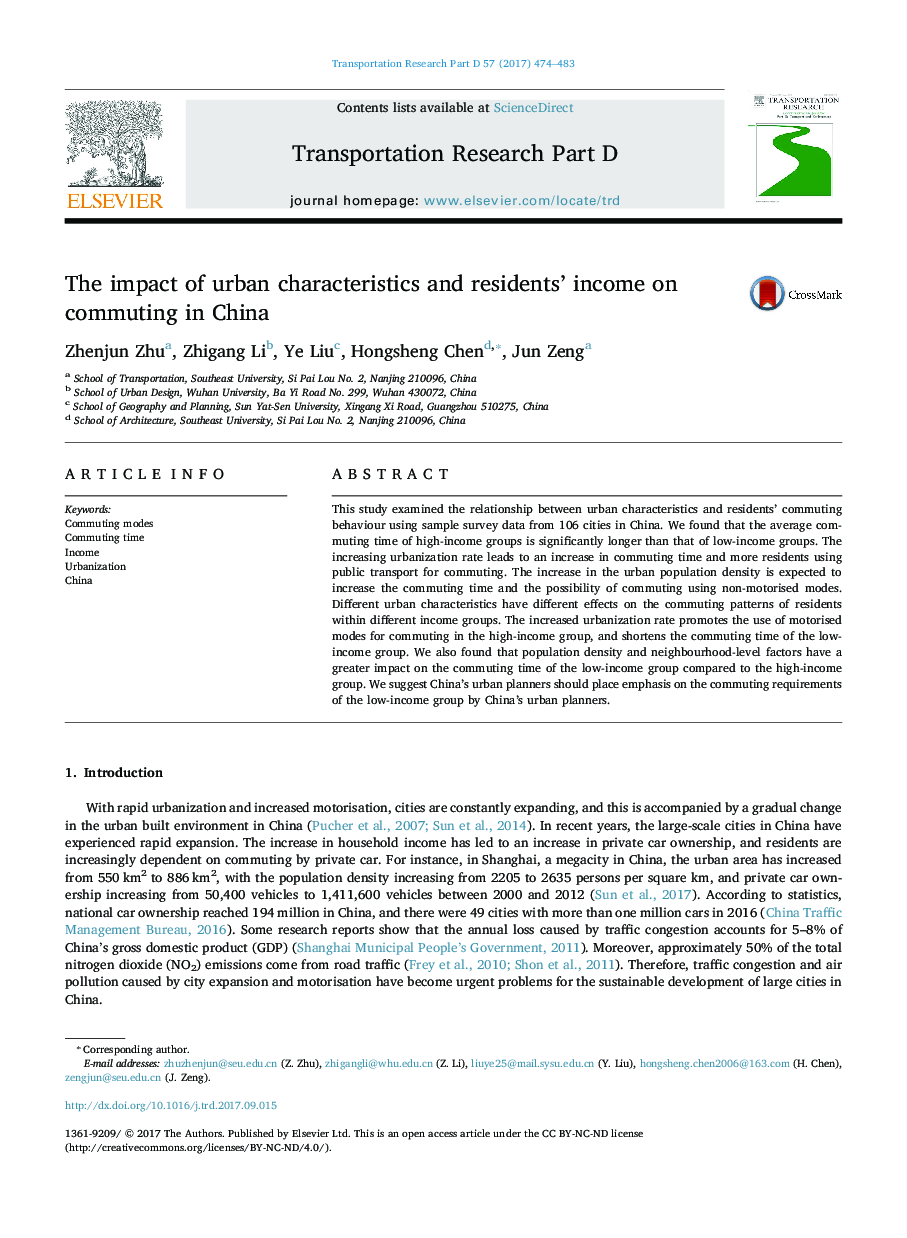| Article ID | Journal | Published Year | Pages | File Type |
|---|---|---|---|---|
| 7499338 | Transportation Research Part D: Transport and Environment | 2017 | 10 Pages |
Abstract
This study examined the relationship between urban characteristics and residents' commuting behaviour using sample survey data from 106 cities in China. We found that the average commuting time of high-income groups is significantly longer than that of low-income groups. The increasing urbanization rate leads to an increase in commuting time and more residents using public transport for commuting. The increase in the urban population density is expected to increase the commuting time and the possibility of commuting using non-motorised modes. Different urban characteristics have different effects on the commuting patterns of residents within different income groups. The increased urbanization rate promotes the use of motorised modes for commuting in the high-income group, and shortens the commuting time of the low-income group. We also found that population density and neighbourhood-level factors have a greater impact on the commuting time of the low-income group compared to the high-income group. We suggest China's urban planners should place emphasis on the commuting requirements of the low-income group by China's urban planners.
Related Topics
Life Sciences
Environmental Science
Environmental Science (General)
Authors
Zhenjun Zhu, Zhigang Li, Ye Liu, Hongsheng Chen, Jun Zeng,
